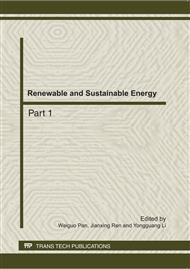p.2519
p.2524
p.2528
p.2532
p.2536
p.2541
p.2545
p.2551
p.2555
Molecular Cloning and Characterization Analysis of Malic Enzyme Gene from Dunaliella parva
Abstract:
Malic enzymes are a class of oxidative decarboxylases which catalyze the oxidative decarboxylation of malate to pyruvate and carbon dioxide. the former studies on lipid pathways and genetic engineering test for enhanced lipid synthesis suggests that ME are the most promising targets gene for enhanced lipid synthesis. The full-length cDNA encoding NADP malic enzyme was obtained from oleaginous microalgae Dunaliella parva, which include 1293 bp open reading frame (ORF) and 26 bp 3′-untranslated sequence. NCBI-CD search revealed that there are two mainly domains predicted in the Dunaliella parva ME protein. In addition, a 724 bp promoter was obtained. The potential regulatory elements associated with hormone and light responses were also found in the ME promoter region. Similarity analysis revealed that the highest identity was found between Dunaliella parva and Chlamydomonas reinhardtii. The Dunaliella parva ME also showed wide similarity with other species.
Info:
Periodical:
Pages:
2536-2540
Citation:
Online since:
October 2011
Authors:
Keywords:
Price:
Сopyright:
© 2012 Trans Tech Publications Ltd. All Rights Reserved
Share:
Citation:


